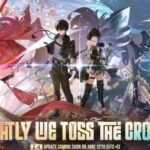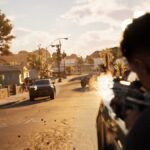On a recent visit to Chile’s Juan Fernández Islands, National Geographic photographer Andy Mann found himself surrounded by hundreds of playful locals: endemic Juan Fernández fur seals. Once thought to be extinct, the seals are believed to number more than 200,000*, far exceeding the islands’ human population of under a thousand. And the blubbery denizens are not shy about approaching divers.
“It’s probably the most joyous, childlike diving I’ve ever done—like getting in the water with 500 puppies,” says Mann. “They’re so curious and charismatic.”
The dive was one of many highlights of Mann’s trip to Juan Fernández, an archipelago of three islands teeming with endemic plants and animals — including the seals, orange-feathered Juan Fernández firecrown hummingbirds, and two vulnerable species of petrels (a type of seabird) known to breed only here. Though the islands are just a two-hour flight from Santiago, Chile’s capital, their untamed natural beauty makes them seem worlds away.
“It’s wild and rugged, and the conditions can be rough. You get this sense of unexplored terrain everywhere,” says Mann, who is also a conservationist and film director. “Without that bit of mystery, it wouldn’t feel like a true adventure.”
A curious Juan Fernández fur seal approaches Mann’s underwater camera.
Photography by Andy Mann


The Juan Fernández Archipelago, located approximately 400 miles (650 kilometers) west of mainland Chile, consists of three main islands: Robinson Crusoe, Alexander Selkirk, and Santa Clara.
Photography by Andy Mann
A conservation oasis
The volcanic island chain invokes a legacy of exploration and survival. The archipelago is named after 16th-century explorer Juan Fernández; Alejandro Selkirk Island after a sailor stranded there in the early 1700s; and Robinson Crusoe Island for the fictional Daniel Defoe character that Selkirk likely inspired.
Today, divers and bird-watchers travel to the islands to see species found nowhere else on Earth. Surfers
seek out waves on the open sea, and hikers relish the rugged, mountainous terrain—including a scenic 10-mile trail between the main town of San Juan Bautista on Robinson Crusoe Island and the airport. For photographers like Mann, the islands’ pristine wilderness is a dream.
Nature thrives here thanks in large part to the archipelago’s remote location and the community’s longstanding commitment to conservation. In 1935, much of the land was designated a national park, and in 2018, Chile established a marine park spanning more than 100,000 square miles (262,000 square kilometers). A two-week Pristine Seas expedition led by National Geographic Explorer Enric Sala in 2017 helped inspire the creation of this marine park.
“The community here is no stranger to marine protections—and they want more,” Mann says. “Just spend a little time here and you realize how important the health of this marine ecosystem is to their culture, to their lifestyle, and to their economy.”
There is a lot to protect, with an abundance of species that can only be found in the Juan Fernández Archipelago. The islands’ biodiversity often draws comparisons to Ecuador’s Galápagos, but the concentration of endemic marine species here is even higher. In the waters surrounding Robinson Crusoe Island, a staggering 98% of fish are unique to the area.
Juan Fernández marine ecoystem
Photography by Andy Mann
In general, Mann says, the town of San Juan Bautista is quiet, unless you count the lapping of the South Pacific against the shore or the chirps of native hummingbirds. But in the mornings and evenings, there is a burst of activity as fishermen jockey for the limited dock access.
The cacophony at the docks—and the livelihoods it represents—is an age-old ritual that endures because of the community’s stewardship. For more than a century, the fishing industry, which is centered around lobster, has adhered to self-imposed restrictions. The fishery closes down for four months of the year to allow recovery of stocks, and harvesting female lobsters with eggs is prohibited, among other rules.
“Fishermen in Juan Fernández were born with conservation in their hearts,” Mann says. “The lobster fishery is so abundant because it’s been managed by their grandfathers to be so. It’s very generational, and there’s a sense of pride in that.”
This commitment to thriving fisheries mirrors the values of Costa Sunglasses. Founded in 1983 by a group of fishermen, Costa has spent the past 40-plus years supporting responsible fishing and helping to protect marine ecosystems around the world. For Mann, a Costa ambassador, that mission is personal—protecting our oceans is his life’s work.
Adventure with a purpose
Mann has been documenting wild places to help protect them for over a decade. He began his career with a focus on adventure and rock climbing, capturing first ascents around the world. Then, a 2013 assignment with National Geographic and Pristine Seas to help establish marine protected areas in the Russian Arctic set him on a new career path.
“I already loved inspiring people to get outdoors,” Mann says. “When I got the assignment in Russia, I reached a whole new level of finding purpose in my work.” Since 2013, Mann’s storytelling and advocacy have helped inspire the creation of the Russian Arctic National Park, new marine protected areas in the Azorean Sea, and the Eastern Tropical Pacific Marine Corridor, a milestone international marine protected area shared by Ecuador, Costa Rica, Colombia, and Panama.

Mann wears Costa’s Rincon II sunglasses on his way to a dive site in the Juan Fernández Islands. Costa’s 580 lens technology blocks harsh yellow light at 580 nm on the visible light spectrum, enhancing colors and contrast.
Photography by Kyle Roepke
Having worked on all seven continents and in every kind of environment, Mann doesn’t let the elements get in the way of a good shot—even when the waters surrounding Robinson Crusoe Island were a bit colder than he anticipated. While their local guides came equipped with dry suits, Mann and his travel companion were “the only gringos in wet suits,” he jokes.
When it comes to eye protection, Mann is always prepared. “Being on the water all day in bright, sunny environments would just burn your eyes out if you didn’t have good sunglasses,” Mann says, adding that he also shields himself with hats and hoodies. “Lens polarization and color matter, too. They take the glare off the top of the ocean, which really helps, especially if you’re looking for animals on the surface.”
The next chapter for protections in Juan Fernández
Residents of the Juan Fernández Islands have invited Mann and organizations such as the Blue Marine Foundation, Island Conservation, and Pew Bertarelli Ocean Legacy to join them in an effort to expand marine protections to all of the archipelago’s waters.
Locals and experts from around the world are working together to furthering marine protections in the Juan Fernández Islands. Maximiliano Bello, a global marine protected areas specialist at the Blue Marine Foundation, organized the expedition with Mann to meet with members of the Juan Fernández community.
Photography by Andy Mann

Mann, wearing Rincon II sunglasses and carrying an oxygen tank, prepares for a dive trip in the waters off Robinson Crusoe Island.
Photography by Kyle Roepke

An April 2025 map shows current marine protected areas (solid blue) surrounding the Juan Fernández Islands and proposed marine protected areas (MPAs, striped blue).
Courtesy Blue Marine Foundation / Pew Bertarelli Ocean Legacy
“Everything is connected by strands of life that depend on each other. That’s why when we create marine protected areas, we need to start thinking about creating networks that connect them,” Mann says. “Fish know no boundaries—nor should marine protections.”
In the meantime, the Juan Fernández Islands offer a model to the world of what true conservation looks like: driven by residents, mindful of future generations, and realistic about what ecosystems need to thrive.
“People look at the Earth and all they see is land. They think we’re a land-based planet,” Mann says. “We’re not. We’re an ocean-based planet, and we need to protect it.”
*Editor’s Note
Determining the total population of the Juan Fernández fur seal involves a degree of estimation. According to recent studies, the seals are believed to number over 200,000.











